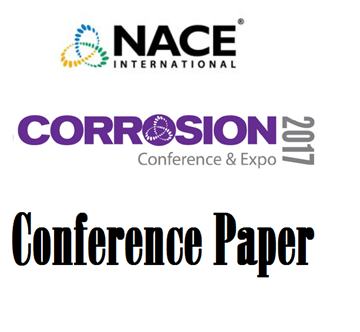Products tagged with 'stress conditions'
View as
Sort by
Display
per page

Available for download
Product Number:
51317--9422-SG
ISBN:
9422 2017 CP
Author:
Libardo Perez
Publication Date:
2017
$20.00
We're sorry, something went wrong.
We are unable to complete this action. Please try again at a later time.
If this error continues to occur, please contact AMPP Customer Support for assistance.
Error Message:
Please login to use Standards Credits*
* AMPP Members receive Standards Credits in order to redeem eligible Standards and Reports in the Store
You are not a Member.
AMPP Members enjoy many benefits, including Standards Credits which can be used to redeem eligible Standards and Reports in the Store.
You can visit the Membership Page to learn about the benefits of membership.
You have previously purchased this item.
Go to Downloadable Products in your AMPP Store profile to find this item.
You do not have sufficient Standards Credits to claim this item.
Click on 'ADD TO CART' to purchase this item.
Please review your transaction.
Click on 'REDEEM' to use your Standards Credits to claim this item.
You have successfully redeemed:
Go to Downloadable Products in your AMPP Store Profile to find and download this item.

Available for download
Product Number:
41216-976-SG
Author:
Norm Klapper
Publication Date:
2016
$20.00
A unique project was completed in Mid-2014 at the Powerhouse #3, Turbine Unit #23 refurbishment, Grand Coulee Dam, located in Washington State. The project scope includes a complete overhaul of the turbine bearings, windings, and critical components. As part of the overall scope, the contractor was charged with the task of coating the entire draft tube surface with an epoxy gel. The Bureau of Reclamation, based in Denver, Colorado, had conducted a site survey which indicated severe wear lines, which result in cavitation and the accompanying backpressure on the exiting water outflow to the Columbia River.
We're sorry, something went wrong.
We are unable to complete this action. Please try again at a later time.
If this error continues to occur, please contact AMPP Customer Support for assistance.
Error Message:
Please login to use Standards Credits*
* AMPP Members receive Standards Credits in order to redeem eligible Standards and Reports in the Store
You are not a Member.
AMPP Members enjoy many benefits, including Standards Credits which can be used to redeem eligible Standards and Reports in the Store.
You can visit the Membership Page to learn about the benefits of membership.
You have previously purchased this item.
Go to Downloadable Products in your AMPP Store profile to find this item.
You do not have sufficient Standards Credits to claim this item.
Click on 'ADD TO CART' to purchase this item.
Please review your transaction.
Click on 'REDEEM' to use your Standards Credits to claim this item.
You have successfully redeemed:
Go to Downloadable Products in your AMPP Store Profile to find and download this item.


